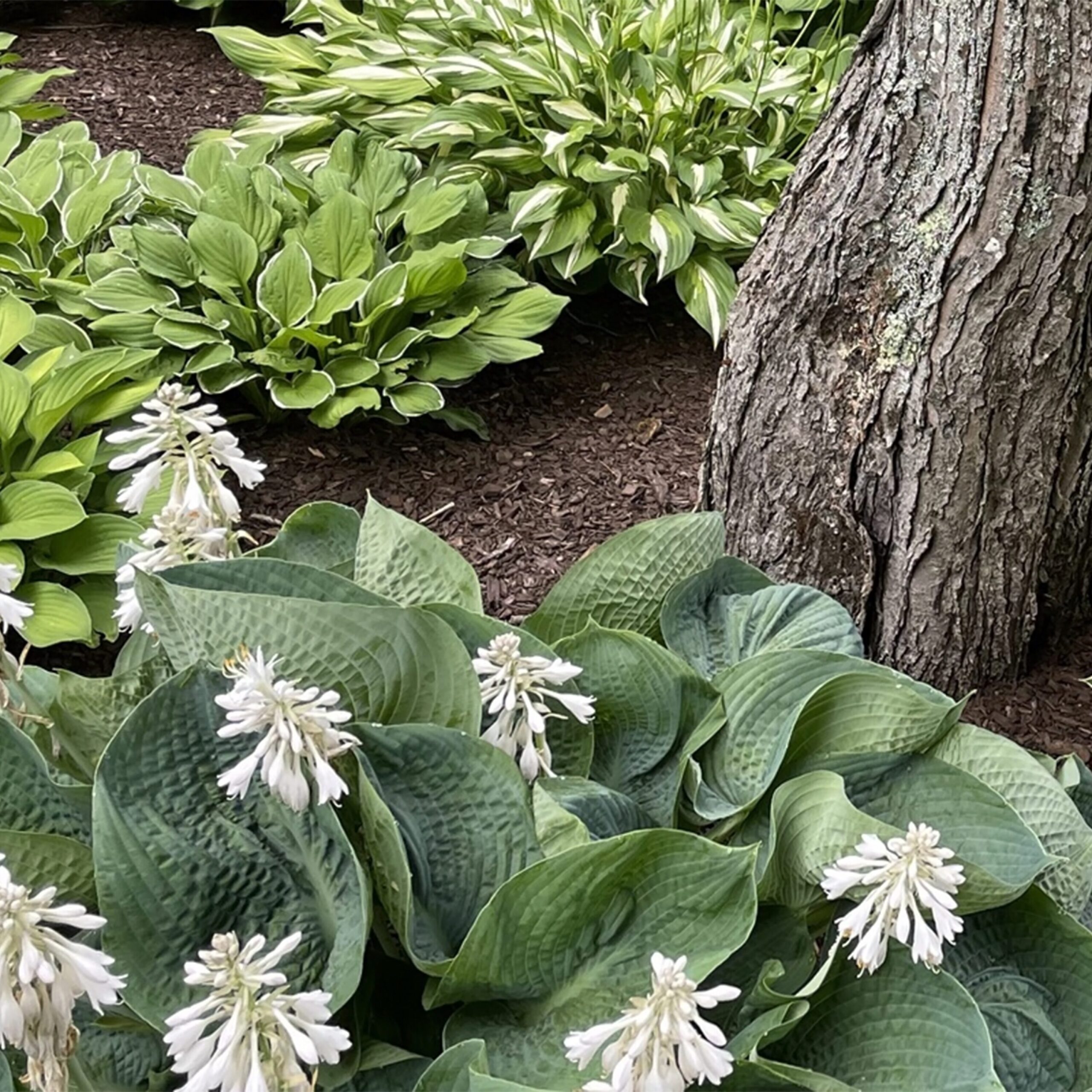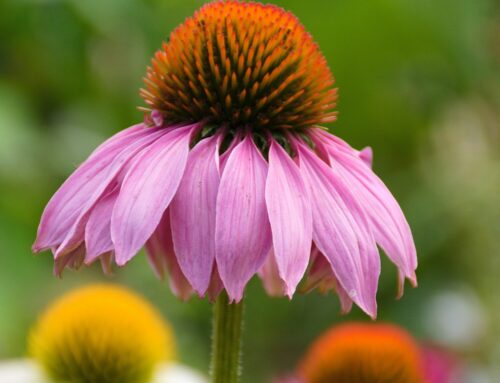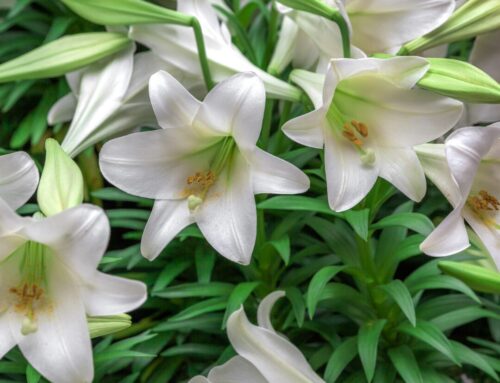Hosta sieboldiana ‘Elegans’, Siebold’s plantain lily, is a shade-loving perennial. Its leaves are large, with a fine corrugated texture. The thick leaves and dense clustering growth habit smothers nearby weeds. In early to midsummer, the plantain lily pushes out white, bell-shaped flowers. It has a wide range of appeal, making it a well-loved garden staple.
- Botanical background:
- Plantain lilies belong to the family Asparagaceae, the asparagus family
- This species of hosta is native to Japan
- Historic significance:
- The genus name, hosta, was named after Austrian botanist Nicholas Host in 1812. It was later renamed to “funkia” to honor another botanist, Heinrich Funk.
- The name reverted to hosta and was finalized in 1905
- Hosta sieboldiana was named in honor of doctor Philipp Franz van Siebold for introducing native Japanese plants to English gardens
- The plantain lily was given the Royal Horticultural Society’s Award of Garden Merit
- Medicinal uses:
- Hosta is a traditional folk medicine in Asia, used as an anti-inflammatory and cough medicine
- Horticultural delight:
- This hosta has an interesting puckered texture on its leaves
- The delicate white flowers add seasonal interest
- Its low, thick growth habit can help prevent the spread of weeds
- Landscape design:
- Siebold’s plantain lily fills in shady spots in the garden
- Its bluish green leaves add a pop of color among foliage
- Cultivation and care:
- Hosta sieboldiana ‘Elegans’ does best in partial sun to full shade
- While most hostas are vulnerable to slugs, this species is moderately pest-resistant
- Environmental benefits:
- Siebold’s plantain lily supports a wide variety of pollinators in the garden





